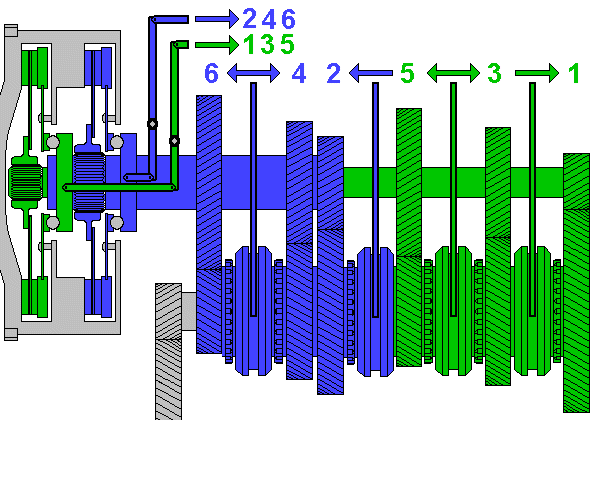|
|
Dual Clutch Gearbox DSG 1

| Shifting times of 40 milliseconds are possible. |
Assignment
The sequential gearbox has many advantages. Unfortunately, the gear changing operation still lasts rather long. A twin-clutch gearbox in which two
gear shafts, one running
inside the other, and each combined with a clutch, offers a solution without a great deal of effort. The aim is to use the components of a dry clutch. In spite of the somewhat increased space needed, it can be also
installed in a transverse mounted, front-wheel drive. The gear changing can be either manual or automatic.
Function
Although we have here a non-coaxial gearbox the input shaft is divided. Whereby, the (green) shaft with the 1st, 3rd
and 5th gears, runs through
the (blue) hollow shaft
with the 2nd, 4th and 6th gears. Each group has a clutch. The sliding collars and clutches are electrically operated.
The reason for the complexity, is the possibility of changing a gear in one group, while the torque
is transferred by one gear of the other group. Without gear-changing delay through simultaneous engaging of one clutch and disengaging of the other, can the process of changing into the next gear be carried out
without hesitation.
If the manual gear-change is no longer necessary, the number of gears possible is practically unlimited. Then more frequent gear-changing e.g., on the motorway, is hardly a problem at all. The advantage is, having
the most favourable gear-ratio at a constant speed, which adds the benefit of a low CO2 emission. This is the reason why the VW boss announced the introduction of up to 10 speeds. 04/13
|
|